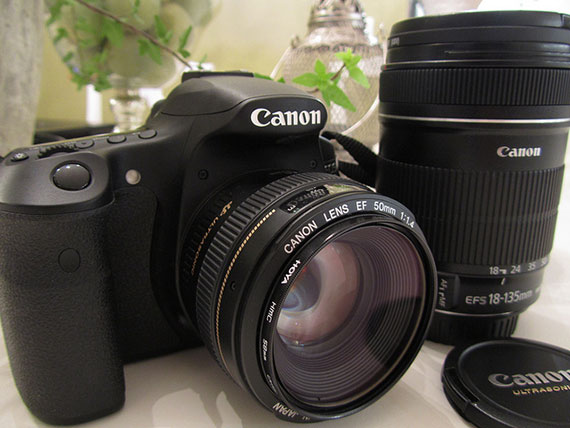I went to visit an old friend yesterday who was my main inspiration to get into photography. It seems that he has been taking beautiful photos forever forever and went on to show me his newest gift – a brand new Canon lens – Ultra-Wide 16-35mm f/2.8.

Photo by mekis; ISO 200, f/3.1, .6-second exposure.
I went on to try it and realize how good the lens was. But WHY was the lens so good? After all – what makes a good lens good? People spend thousands of dollars on a good lens. Here are a few reasons why it’s so important.
1) Distortion
All lenses have some kind of distortion. This tends to be manifested most in ultra wide angle lenses, particularly at very wides angles. A good example of this is one picture that I took in Venice. I had walked back as far as possible to fit the entire frame into the photograph and had to use the widest lens angle possible (14mm). You can see the tower on the left hand side appears to be leaning. Clearly, it is not like this (and you’re going to have to believe me that it’s straight), but illustrates the lens distortion that exists.
Better quality lenses have less distortion through the use of a greater number of lens elements. Nikon has just released an excellent 14-24mm ultra wide angle lens with very little distortion. The lens has 11 lens elements and weighs a full 1kg. Clearly not a lens to take lightly.
While photo manipulation software exists today that can correct lens distortion, it is always better to capture the image as it is.
2) Speed
The camera lens is responsible for capturing and focusing light onto the camera sensor. Better quality lenses tend to have a larger aperture, allowing more light to pass through to the sensor. The aperture size is measured as an f-stop. Confusingly, the larger the maximum aperture of the lens, the smaller the f-stop.
Faster lenses are key to capturing sporting events and wildlife. They are also very handy to have for low light photographs and allow the photographer to rely less on the ISO ability of the camera.
3) Vignetting
Vignetting manifests at the edge of a photograph as darker areas. This is because more light enters the center of the lens than the edges due to poor lens glass or construction quality.
4) Aberration
There is chromatic aberration and spherical aberration. Chromatic aberration is a type of distortion in which the lens fails to focus all colors to the same convergence point. This shows up as a discolored edge to objects in a picture. Wiki has a great photographic example of Chromatic aberration and can be found here on Wikipedia.
Spherical aberration is distortion caused by the spherical lens shape and occurs when light hits near the edge of the lens instead of the center resulting in some resolution and clarity issues. This occurs more when the aperture of the lens is completely open.
In reality, most high quality lenses have a plethora of technologies built into them to reduce aberration through a number of means including lens coatings, advanced construction methods and floating elements.
5) Vibration Reduction
Many lenses have vibration reduction built into the lens. Vibration reduction helps to stabilize the lens through a hand held photograph allowing the photographer to take a clear picture at a slower shutter speed than they normally would have been able to. Ironically, vibration reduction on lenses must be turned off for use on a long exposure tripod photograph.
Lenses are to cameras as tires are to cars. It’s great to buy a Ferrari, but put shoddy tires on it and the humble Chevy will drive circles around it. In reality, most lenses that you can purchase today (even basic ones) are consistently very good, but many times some extra investment into lenses will yield even better results.
About the Author:
For more musings on photography, visit the rantings and ravings blog (learnphotographyalberta.ca) at Learn Photography Alberta.
Like This Article?
Don't Miss The Next One!
Join over 100,000 photographers of all experience levels who receive our free photography tips and articles to stay current:






Dear James
Thanks for an ‘ Tell you all ‘ article on the Photographic Lens.
All things said and done, my opinion (based on three decades of experience)
stands firm with the 50mm f/1.4 (I work with a Minolta AF lens).
Sharpness, low light capability, bokeh and an affordable price are its merits.
Any other lens can not compete with this lens for its versatility and results.
I consider my Sony DT 16-50mm f/2.8 zoom, although produces very good
images, is a poor second to the 50mm f/1.4 ……!!!
Hi, I do hope you realise that the distortion as shown in the venice picture you reference, is not caused by optical distortion. The phenomenon you see here is due to perspective. Had you kept your camera sensor perfectly parallel to the tower, the vertical lines of the tower would have been perfectly vertical and straight in your picture. Given location and subject, the 24mm lens would not have covered the entire ower, which is where a wider angle lens would have helped indeed. However, had you pointed that lens up, similar distortions would have shown.
This kind of transformation is something view cameras do as well as perspective correction lenses(nikon. Tilt-shift for canon). The essence of these lenses (for perspective correction purposes) is that they allow you more freedom of what’s on the picture without having to sacrifice the sensor plane parallelness to the subject.
For a very dry and clinical show of what is meant by distortion, please have a look at the images in my stream:
http://www.flickr.com/photos/antoonh/6840842504/in/photostream/
Possibly the most boring pictures ever by the way.
They pretty clearly show the hefty distortion caused by the 24-104 at 24mm (and at the same time show that distortion is not related to aperture).